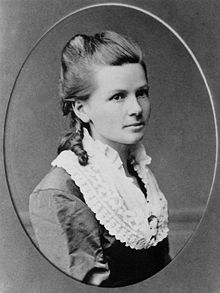
http://en.wikipedia.org/wiki/Bertha_Benz
There was also an exhibition of 'advertising the motor car' and one of my questions posed to Harry on the way down was 'When did the car start to need the woman sitting on the bonnet to sell it?' We guessed at the 1950's and 60's but were about 10 years too early. I was fascinated with the life of advertising - not surprisingly it has changed from the factual and the practical to the exotic over time. Before 1915 it was all about the 'nuts and bolts' of the car, reliability, low running costs and horse power. A few years later it was all about two car families, reliability, status and safety eg 'Is your wife marooned during the day?' 'Why leave the car parked all day at the office when she is stuck at home with the kids?' Come on hubby - get a second car.
In the 1920's - the car offered the driver and passengers, freedom, adventure and fun - speeding through the countryside without a care in the world. 1930's and 1940's - it was the long, sleek car - sophistication and status. And although not draped across the bonnet the woman began to appear as an added feature.
1950's and 1960's - it was all about 'the bigger the better' - no longer a means of transport but a fashion extra (huh - the word 'sexy' was added to the motorcar). And petrol advertising became big.
1960's and 1970's - oil prices went up and so did traffic volumes and environmental issues became the focus of a few. "The female form has been used by advertisers to sell cars almost from the beginning, but in the 1960's and 1970's woman were reduced almost to automotive garnish with very clear connotations."
Then there was an article about how things had changed and "thankfully political correctness no longer allows such sexist images and woman are now portrayed as confident, sophisticated, successful and independent drivers in their own right". I took a couple of photos of my favourite cars - one a real cutie - the height of sophistication and one which would make me feel 'really important' if I ever get to ride in one.
On the way back we stopped at Glastonbury at the outlet shops with the plan to buy a couple of things and then to go to a wassail. But it was my turn not to feel great and so we missed this great celebration and barn dance. Having only read about wassailing in the last week I was keen to know more... There are apparently two types the House-Visiting wassail and the Orchard-Visiting wassail. House-Visiting wassails are a bit like carolers coming to the door at Christmas time except they do not sing christmas carols but wassails "Here we come a-wassailing, among the leaves so green". But I wanted to go to an Orchard-Visiting wassail - where people sing to trees in apple orchards in cider-producing regions of England to promote a good harvest for the coming year.
"Apple tree, apple tree,
We are not daily beggars
That beg from door to door,
But we are neighbours' children
Whom you have seen before.
The lord of the manor would give food and drink to the peasants in exchange for their blessing and goodwill, i.e..
Love and joy come to you,
And to you your wassail too,
And God bless you and send you a happy New Year.
And God send you a happy New Year.
All interesting stuff ... and last but not least there are the puzzle wassail bowls and fuddling cups. Lots of history behind these bowls and cups all joined together... drink from one spout get wet from another. The challenge was to drink each cup in the right order and it won't spill!!
"Apple tree, apple tree,
we all come to wassail thee,
Bear this year and next year to bloom and to blow,
Hat fulls, cap fulls, three cornered sack fills,
Hip, Hip, Hip, hurrah, Holler biys, holler hurrah."
Traditionally, the wassail is celebrated on the Twelfth Night after Christmas although some celebrate it on January 17 as that would have been the correct date if we weren't using the Gregorian Calendar in 1752. Wassailing comes from the middle ages and symbolises the exchange between the feudal lords and their peasants - it is charitable giving rather than begging as shown in the words of the song "Here We Come A-Wassailing"...We are not daily beggars
That beg from door to door,
But we are neighbours' children
Whom you have seen before.
The lord of the manor would give food and drink to the peasants in exchange for their blessing and goodwill, i.e..
Love and joy come to you,
And to you your wassail too,
And God bless you and send you a happy New Year.
And God send you a happy New Year.
All interesting stuff ... and last but not least there are the puzzle wassail bowls and fuddling cups. Lots of history behind these bowls and cups all joined together... drink from one spout get wet from another. The challenge was to drink each cup in the right order and it won't spill!!



















































